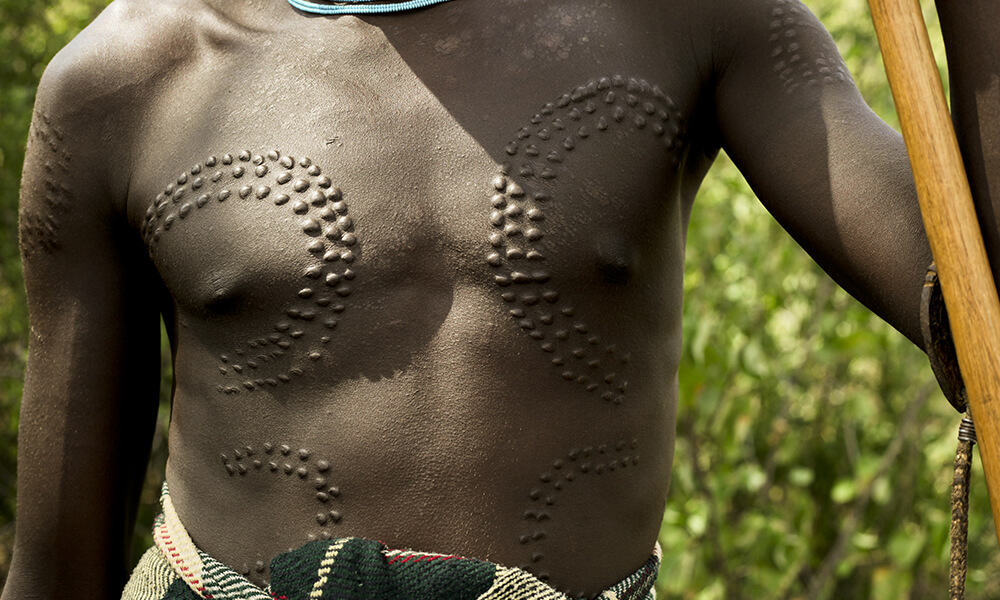Deformed beauty: Cultural traditions of body modification
Media from the offices of Broadway

Deformed beauty: Cultural traditions of body modification
People and cultures are defined by their physical appearance. Plastic surgery is a modern way for men and women to enhance their bodies, but methods and standards of beauty are constantly changing. Societal norms surrounding beauty ideals, religious ceremonies and coming of age celebrations have been evolving throughout history. Body modification practices are widespread expressions of individual and cultural beauty. Many of these traditions are passed on from generation to generation, playing different roles in communities across the globe.
Ear stretching
Ear stretching is practiced by people around the world, including tribes in Kenya, cultures in the Amazon Basin, youth in Thailand and people in the U.S. This form of body modification is linked to religious practices and coming of age celebrations. It’s seen as a way to ward off evil and enhance physical beauty. There’s no specific origin for ear lobe stretching, because it appears organically in various cultures throughout history. The size of the stretched lobes ranges from barely noticeable to substantially larger than normal. The holes are adorned with various styles of jewelry that generally fit into the category of flesh plugs or flesh tunnels.

Lip plates
Lip plates require a gradual process that stretches a pierced hole in the upper or lower lip. Some tribes placed importance on the size of the lip plates as a status symbol. Wood or clay discs would plug the hole and serve as ornamentation. Historians believe that this custom began as a status symbol and a sign that women had reached maturity. It also served as a way to protect young women from slave traders. This form of body modification is still practiced in some African tribes and cultures located in the Amazon rainforest.
Human tooth sharpening
Human tooth sharpening is the historical practice of manually filing the front teeth. This body modification practice was used for spiritual reasons and as a rite of passage for many years. There are differences in tooth sharpening practices across cultures, depending on gender and societal norms. In Bali, they believed that teeth were symbols of anger, jealousy and other negative emotions. Mayan cultures would carve designs into their teeth as a way to distinguish between social classes. Some groups of people sharpened their teeth to imitate sharks and other animals.
Scarification
Scarification has been practiced in cultures all over the world. This painful tradition is typically part of an initiation ceremony for men and a sign of bravery. Razor blades draw patterns all over the skin as a substitute for tattoo ink. Boys and girls in South Sudan are not allowed to show their pain during the procedure. Scarification, or branding, is still practiced today by people who cut or burn images into their skin.
Neck accentuation
Kayan women in Thailand and Burma began the practice of neck accentuation. This process gives the appearance of an elongated neck as coils are gradually added. Instead of actually making the neck longer, the coils weigh down on a woman’s shoulders until more distance is created between the torso and the head. This process begins when girls reach five years old and continues until up to 25 coils are worn. A traditional sign of beauty, decorations are added to the coils for more ornamentation.

Foot binding
The practice of foot binding began in ancient China and grew in popularity for hundreds of years. Tiny feet were considered a sign of beauty. The ideal foot was three inches and shaped like a crescent moon. Women were crippled as the bones in their feet were broken and bound to increase their chances of an advantageous marriage. Elegant shoes masked the deformed feet. The Chinese government abolished this practice in the late 1920s when it proved harmful for women’s health.
Nose plugs
Women from the Apatani tribe in rural India were renowned for their beauty. As a way to protect themselves from abduction and enemies, women began to wear nose plugs and tattoo their faces. Large, wooden nose plugs are not standard in today’s culture, but they were a common practice for many years.
People and cultures around the world have used body modifications to define beauty, practice religion and celebrate the coming of age. These forms of expression are passed along from generation to generation, and many are still performed today. Standards of beauty continue to evolve, but body modification traditions maintain historical and cultural significance.
Want to learn more?
Have questions?
Want to schedule a consultation?
